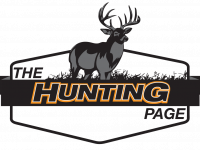The best time to learn how big bucks use your hunting property is immediately after the hunting season ends. The deer are still in their hunting season mode and travel patterns will be readily visible. Deer sign is generally easy to find this time of year as the ground is soft, the trees are rubbed, scrapes are in evidence, and feeding and bedding areas are readily identified. The sign laid you see will be made during hunting season, giving you a picture of how the behaved when being hunted. More importantly the tracks of Mr. Big might be right there for you to follow.
Walk ‘Em Back
One of the best strategies for understanding how the deer you hunted kept alive is to “walk em back” or slipping into your hunting areas and walking the tracks backwards. You take a close look at the trails around food plots or your stand locations and mark them on a topo map. Your job is to figure out how the deer you were after approached the area, where did he come from and how did he get your scent. Once you analyze the area immediately around your hunting area, move 50-150 yards down wind to the prevailing winds and look for more evidence of how Mr.Big “beat you” at your own game. Deer have the ability to scent-check a food plot or stand locations from a few hundred yards away and you can bet a mature old buck will do it every opportunity he gets.
The Road Less Traveled
Older deer (especially mature bucks) will often move carefully through the woods, they move from point to point using cover and their nose to avoid danger. They often avoid the trails used by younger bucks and does. Find these locations and mark them on your map. Then hunt them next year toward the latter part of the season. These are the “roads less traveled”.
A number of years back, Craig took a fine old buck off of a snow-covered food plot on a late season hunt. The next day, Neil back tracked him in the snow and discovered that the buck had checked out 3 separate stands before coming into the open. These stands had been bowhunted periodically for a number of years preceding the kill, and the old buck was obviously wise to them, he knew where they were and how to check them for danger. They don’t get big racks and worn teeth rushing into the open without first checking things out.
We have noticed over the years that some of our best deer had their own way of doing things. They rub different trees, and hook brush differently, and definitely travel different trails than most deer do. Neil gets excited by faint trails in the thick cover; especially if you can see where a good buck hooked his horns on some brush or rubbed a larger than average tree. Over time you will develop a good eye for rubs or other sign made by larger-than-average bucks. You have a better chance of connecting with a mature deer on the “trail less traveled” than the “cow path” to the feedlot.
Take along a topo map and mark in the trails the deer you were hunting used to give you the slip, don’t be afraid to take your pocket camera along and take a bunch of photos. It costs nothing, and they can be real handy when going over your maps a few months later. The idea is to get enough detail on the map to jog your memory 5 or 6 months later when you dig out the old map to help you set a few stands for the fall. Chances are you won’t see much of Mr. Big next fall when you are getting ready for hunting season.
And remember, scouting is more than a leisurely walk in the woods. You are on a mission to find things out and you should view it accordingly. The quicker you learn the property, the quicker you can stay out of it! That’s right, stay out of it.



